Related Content
Content
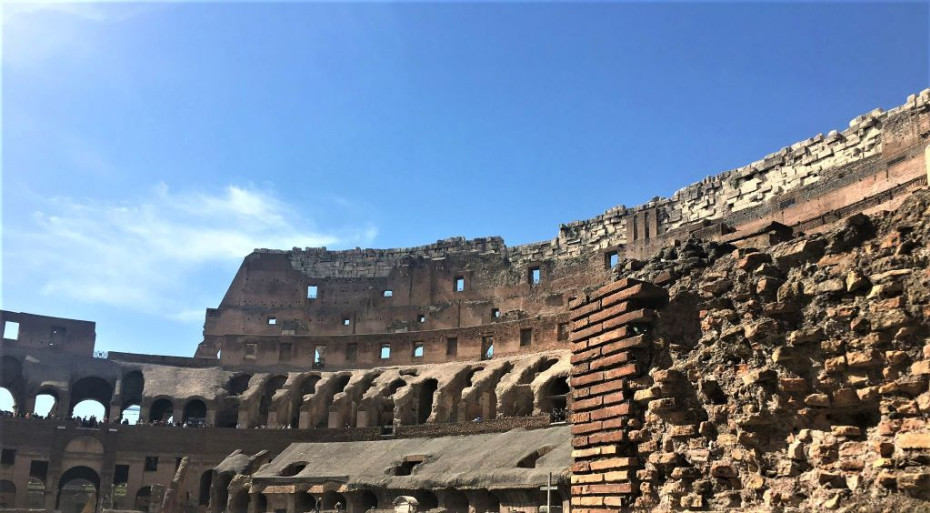
Exploring Rome by the city's Metro from Roma Termini
Twelve stunning locations in 'The Eternal City' within easy reach of a Metro station!
Share
Rome has two Metro Lines which cross its city centre:
The two lines cross each other at Roma Termini, so staying in the area around the city's main rail station not only offers easy access when taking mainline trains to and from Rome - it's also a great base for accessing many of the city's most popular locations and it's hidden gems.
Basilica of Saint Paul Outside The Walls
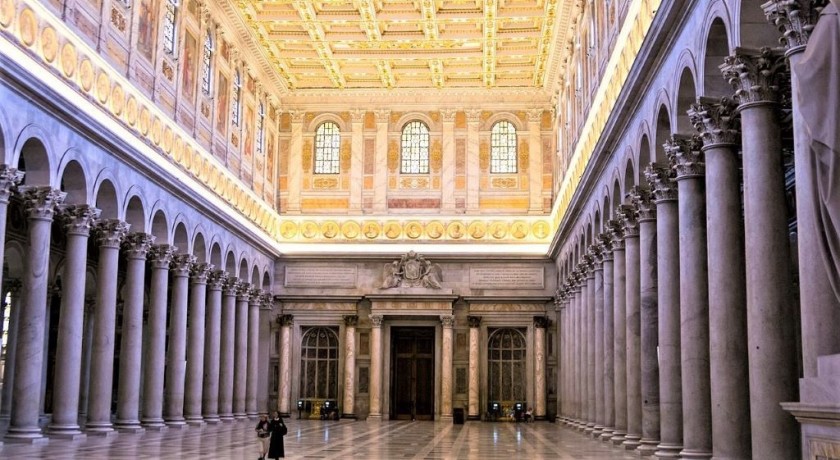
In the countries in which Christianity is the dominant religion, most city's only have one cathedral, but the fact that Rome encloses The Vatican City, 'the capital' of the Catholic faith, means the urban area is home to four 'major basilicas', which share the status of cathedrals.
- St Peter's - see the info for the Vatican Museum further down the guide
- the Basilica di San Giovanni in Laterano (see below)
- the Basilica of Santa Maria Maggiore, which is within a 10 minute walk of Roma Termini
- this Basilica of Saint Paul Outside The Walls.
Its name is due to the fact that it has always been outside of the Vatican City's boundary, and until Rome began to sprawl in the 20th century, it would have been surrounded by countryside.
Because it's a 7 stop ride south to Basilica S. Paolo station from Roma Termini on the B Line, it is always quieter than the other three major basilicas.
Image by Antoine Taveneaux and downloaded from Wikicommons.
Basilica di San Giovanni in Laterano
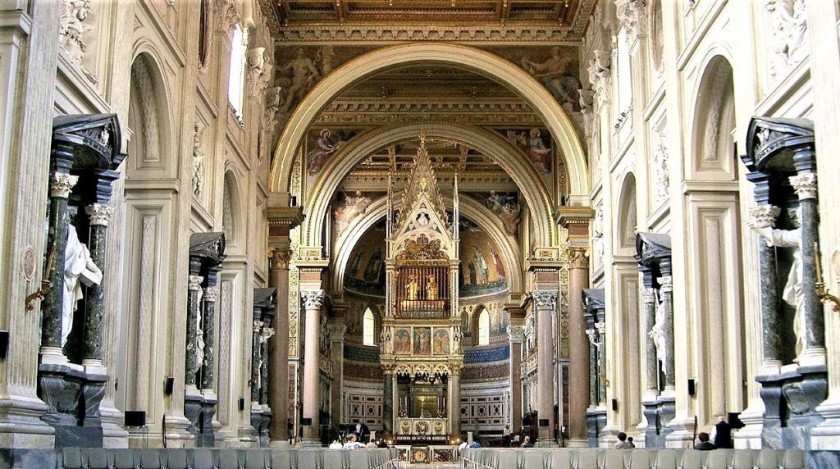
The Papal Basilica of Saint Peter in the Vatican is the world's largest church, but this Basilica di San Giovanni in Laterano is the cathedral church of Rome.
Most of Rome's most visited locations are to the south and west of Roma Termini, but this cathedral, known in English as the Papal Archbasilica of Saint John [in] Lateran, is to the east.
It's a three stop ride on Line A, the orange line - direction Anagnina, from Termini to San Giovanni station.
So its location, in the opposite direction to the likes of the Spanish Steps, The Parthenon and The Vatican City, means that far fewer tourists come here to worship or to be awed by its 18th century interior with its huge statues of the twelve apostles - one of the most stunning sights in Rome.
Image by edwin.11 and downloaded from Wikicommons.
Centrale Montemartini

Building a power station anywhere near the heart of Rome would obviously not have been a smart move, hence this location to the south of the city centre, but within a 10 - 15 min walk of Garbatella station.
Your efforts to make a five stop journey from Termini on Line B - direction Laurentina, followed by a walk through a quiet area dominated by car parks for small factories and workshops, will be rewarded by accessing one of the Italian capital's most stunning visual experiences!
A quirk of fate has led to an abandoned power station becoming a permanent home to 400 ancient statues, which had been moved here while renovation work was being carried out at The Capitoline Museums.
Contemporary Romans were instantly wowed by the juxtaposition of the art of Ancient Rome being nestled amidst the 20th century machinery, hence the Centrale Montemartini has become a permanent and much loved feature of the city's cultural landscape.
Image by Carole Raddato from Frankfurt, Germany and downloaded from Wikicommons.
the Cimitero Accatolico
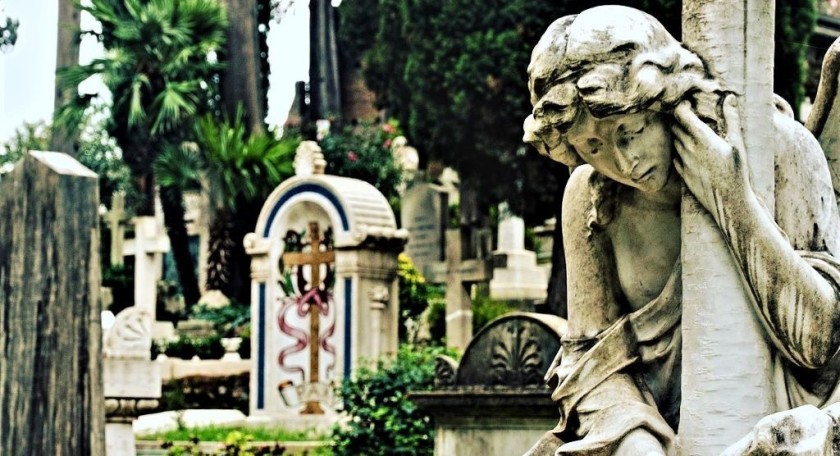
Away from the bustle of Rome, which is an inevitable consequence of it being the world's 14th most visited city, it's possible to seek out quiet corners.
This is the main non-Catholic burial site in the Italian capital, but those who appreciate cultural history also come here to see the graves of the poets, John Keats and Percy Bysshe Shelley.
it can be found across the street from Piramide station, which is on line B.
Imagge by Gidipa and downloaded from Wikicommons.
The Colosseum

Colosseo station, a two stop hop from Termini on line B, is aptly named, because it is across the street from The Colosseum.
You can imagine the great spectacles that used to occur there, including all the fierce contests and dazzling displays.
In gaming, some of the best titles of all time are set in ancient Rome and have helped more people discover the era.
For instance, Shadow of Rome and Total War: Rome are well-loved titles among players.
There are also iGaming titles such as Slingo Centurion, and for players who would prefer free spins on Slingo to gain an introduction to the game format, there are additional titles like Slingo XXXtreme and Slingo Super Spin.
Luneur Park
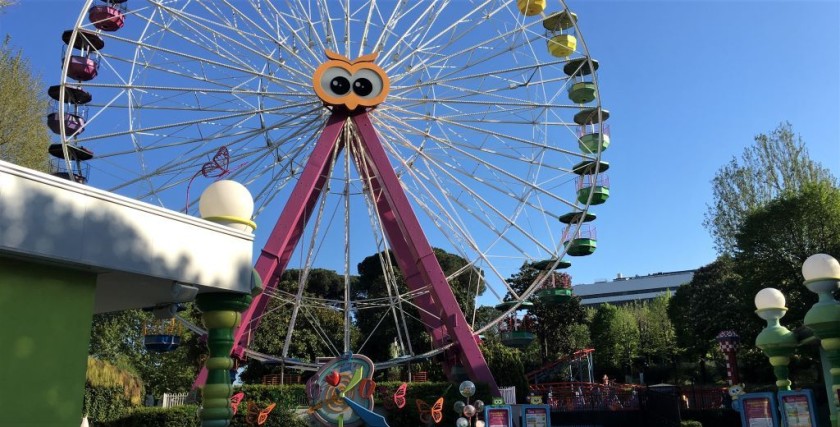
Children may find the idea of following in the footsteps of the Ancient Rome thrilling, but they and everyone else, have to put their imaginations into overdrive.
Hence the need for a diverting alternative, which is why Luneur Park is popular with locals, particularly in the summer, as it has a duel function as both a child orientated amsusement park and a water park.
It is the city's only water park which can be easily accessed on the metro and you don't have to be a kid to ride its water slides to escape the heat.
The top of its Ferris wheel also offers an unusual view over Rome.
The closest station is EUR Magliana which is towards the southern end of Line B, the Blue Line.
Though a 15-20 min walk can be avoided by taking local bus line / route 767 from a stop on the street named Val Europa - which is by EUR Palasport station, the stop beyond EUR Magliana.
Image by Captain Raju and downloaded from Wikicommons.
Mausoleo di Santa Costanza

Inevitably there are few buildings in central Rome that date back to the 4th century, which can still be seen in their close to original states, but because Santa Costanza is located to the north of the city it is a remarkable survivor.
Those who want to see and experience early Christian architecture come here to see the building's frescos and late Roman mosaics.
The Mausoleo is a short walk from Sant’Agnese - Annibaliano metro station, which takes its name from the Basilica of St. Agnes Outside the Walls - a beautiful church which in effect replaced Santa Costanza as the area's primary location for worship.
Though take care when heading here from Termini, line B of the metro, the blue line, splits into two branches at its northern end, so you need to take trains with a final destination of Jonio.
Image has been downloaded from Wikicommons.
Museum of Roman Civilisation
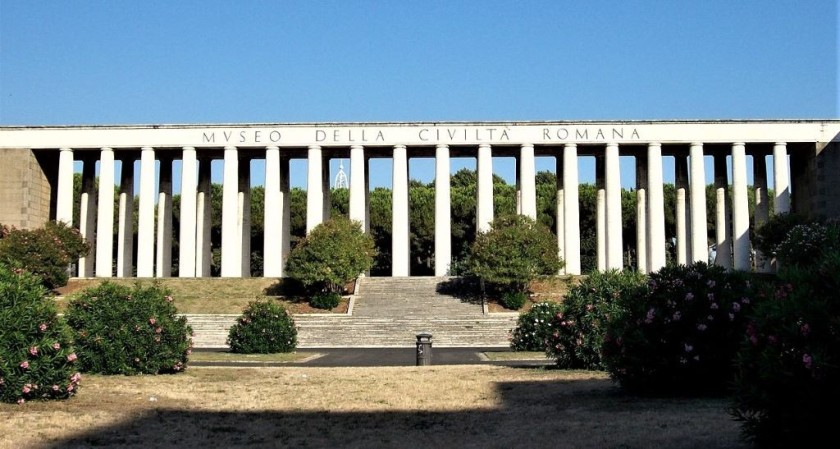
Before or after seeing the remains of Ancient Rome you may want to place them in context, by gaining a sense of what the city looked like when the likes of The Forum and The Colosseum were fully intact.
This can be done by viewing the large model of the city, as it was at the time of Constantine The Great, which is among the many highlights of The Museum of Roman Civilization.
Though you may expect the newly renovated building, which also houses many examples of late Roman and early Christian art, to be in itself an echo of Rome's history, but it only opened its doors in 1941.
That date is an indicator of the museum's origin, because it was commissioned by Benito Mussolini - and is now one of the many striking buildings in the Esposizione Universale Roma (EUR) district, which in the post-WWII era was designated as the business and civil service district of Rome.
So politics aside, it is the area of the city in which to experience the best of 20th century Rome and makes a stark contrast with the city centre.
Hence the closest station to the museum being EUR Fermi, the final stop before the southern terminus of Metro line B.
Image by Alberti1492 and downloaded from Wikicommons.
Parco Delqui Acquedotti
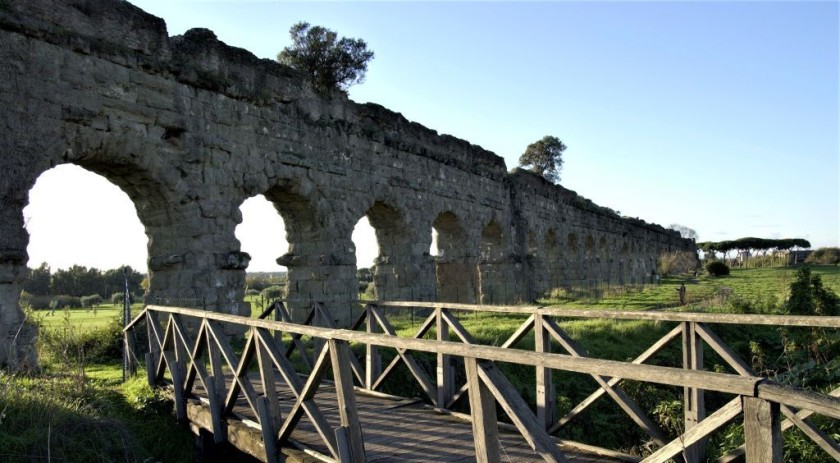
Rome has many green spaces in which to find peace and summer shade, but this park on the southern edge of the city has something unique, which justifies the journey - because an aqueduct runs through it!
Not just any aqueduct, because the park is dominated by the largely extant remains of the Acqua Claudia which was begun under the reign of Emperor Caligua and completed under the reign of Emperor Claudius.
The Acqua Claudia is the best preserved of the 'four great aqueducts of Rome' and the park which surrounds it is a 10 - 20 min walk from Subaugusta station, which is two stops from western end of Metro Line A at Anagnina.
The image taken by Photomarco and downloaded from Wikicommons only shows a short section of what remains of the aqueduct.
The Vatican Museums
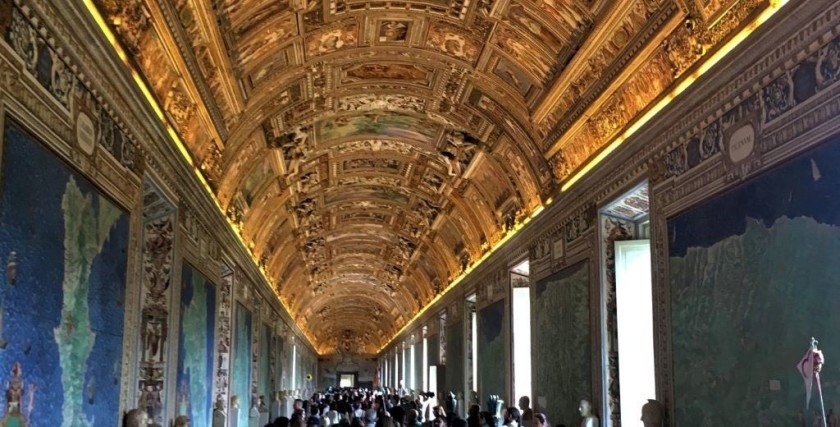
The Vatican Museums home to many treasures of Rome, including the Sistine Chapel, are fortunately located in the area of The Vatican City that is closest to a metro station.
The main entrance of the museum complex is within a 10 minute walk of Ottaviano station, which is on line A of the Metro, a six station ride west from Termini - take trains heading to Battistini.
The museum complex is free to enter on the final Sunday of each month, which inevitably leads to ling queues building up on those days.
Villa Borghese Gardens
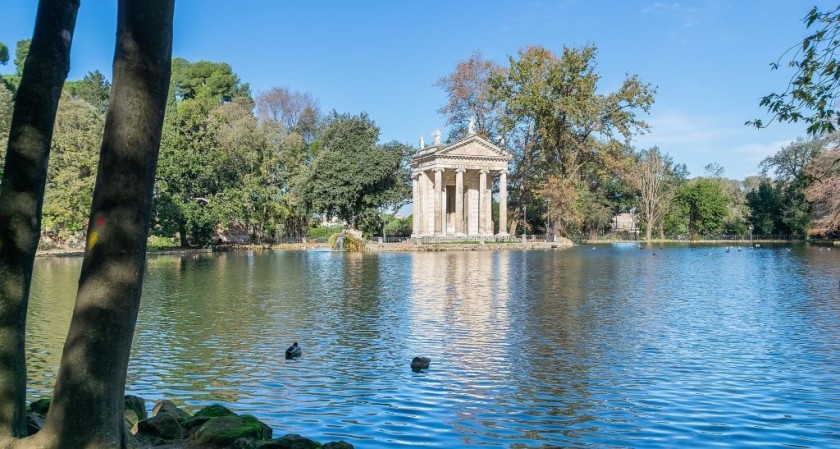
The Villa Borghese Garden, which unsurprisingly surrounds the Villa Borghese art museum, is the large green space of Rome that's closest to the city centre.
Though note that it is not a park, this is not the place in Rome to come and play ball games - aside from the shade of the summer heat, the reason for venturing here is to appreciate the formal gardens and the beauty of the buildings to be found within them.
Just across the street from the north-west corner of the garden you'll find the National Gallery of Modern and Contemporary Art and by the south-west corner is Flamino Metro station on line A.
Image taken by Krzysztof Golik and downloaded from Wikicommons.
Villa Medici
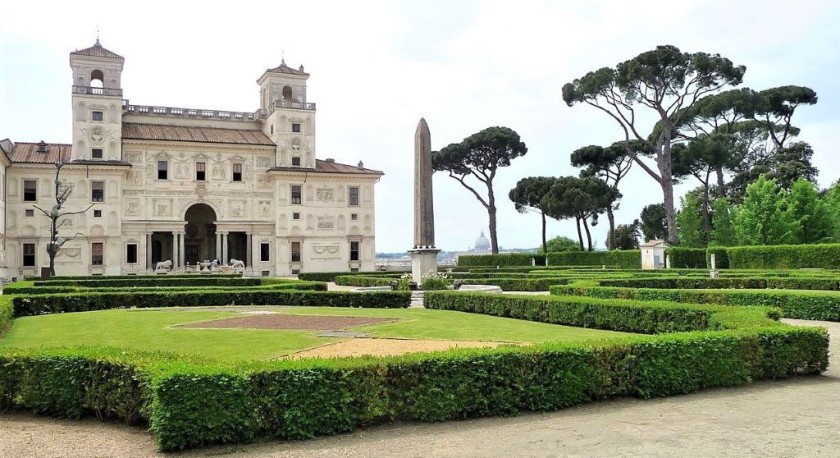
Spagna Metro station on line A lives up to its name thanks to an exit at the top of the Spanish steps,
However, the comparative few who go straight ahead from this exit are able to experience a strong contender for Rome's most beautiful building.
The Villa Medici and its equally lovely gardens have long been prized hence a chequered history, which saw it being claimed by Napoleon Bonaparte for use as The French Academy in Rome.
Back in the 1960s its status as a home for showcasing the work for contemporary French artists was revived and today it is still unique among Rome's many museums and galleries.
Plus its elevated position gives it great views towards The Vatican City.
Image taken by Warburg and downloaded from Wikicommons.
Buying Metro Tickets and Passes
Children aged 10 and under travel for free on the Rome Metro and for those aged 11 and over, a single ride ticket costs €1.50 - one way ride ticket is known as a 'BIT' ticket.
Though if you want to make the most of the marvelous suggestions
on this guide MULTI-BIT tickets which cover up to ten journeys are available - They won't save money, but you can avoid the hassle of having to buy a ticket at the station, each time you want to take a ride.
Passes are also available which cover, 24, 48 or 72 hours and include all public transport within the Roma metropolitan area, including the metro, buses and local trains.
There are also 48 and 72 hour Roma Passes which include public transport and entry to multiple attractions in Rome.
They cover admission into many of the attractions included above:
- the Villa Borghese art museum
- the National Gallery of Modern and Contemporary Art
- the Centrale Montemartini
- The Colosseum, check availability prior to booking a pass.

Simon Harper
I wanted to share my passion for train travel and explain how anyone can take the fantastic journeys I have taken.

This is one of more than 100 train travel guides available on ShowMeTheJourney, which will make it easier to take the train journeys you want or need to make. As always, all images were captured on trips taken by ShowMeTheJourney.
This second version of ShowMeTheJourney is exciting and new, so we are genuinely thrilled that you are here and reading this, but we also need your help.
We’re striving not to let anything get in the way of providing the most useful service possible, hence a facility has been set up with DonorBox which can be used to support the running costs and make improvements.
Instead of advertising or paywalls, your financial support will make a positive difference to delivering an enhanced service, as there’s a lot of ideas which we want to make happen.
So if you have found the info provided here to be useful, please consider saying thank you.
